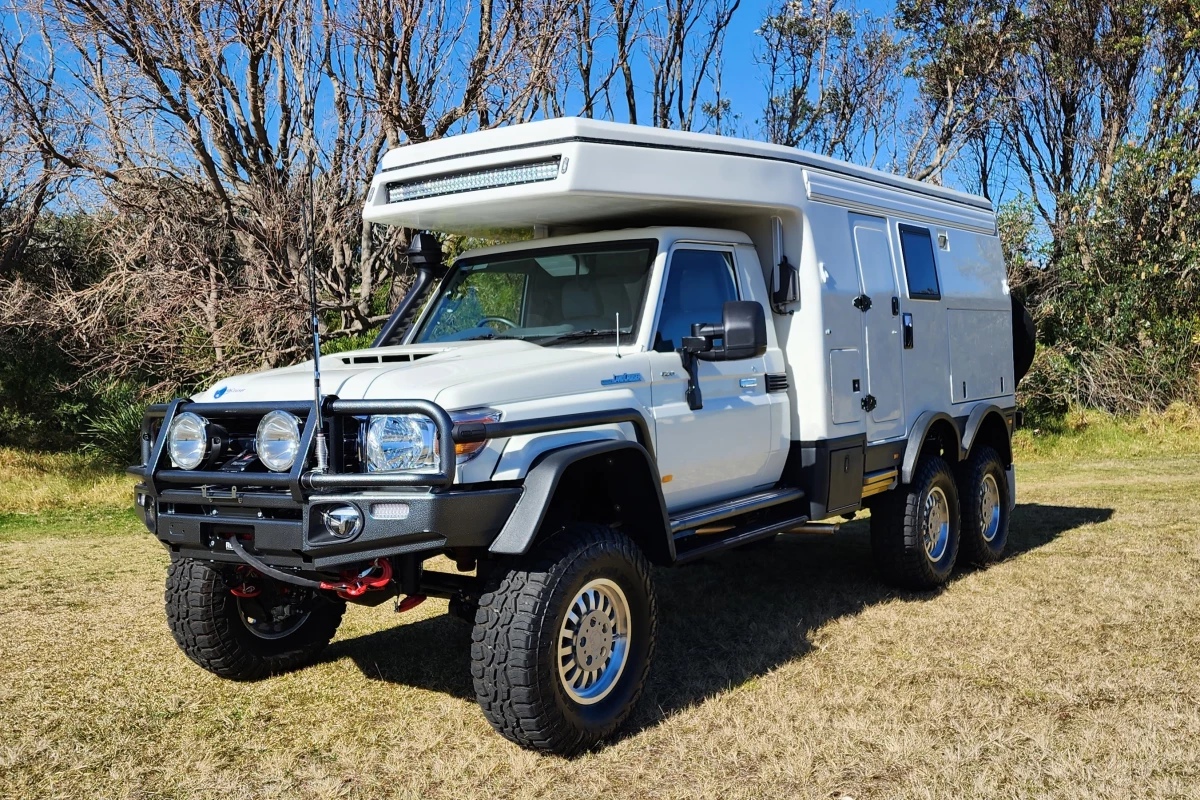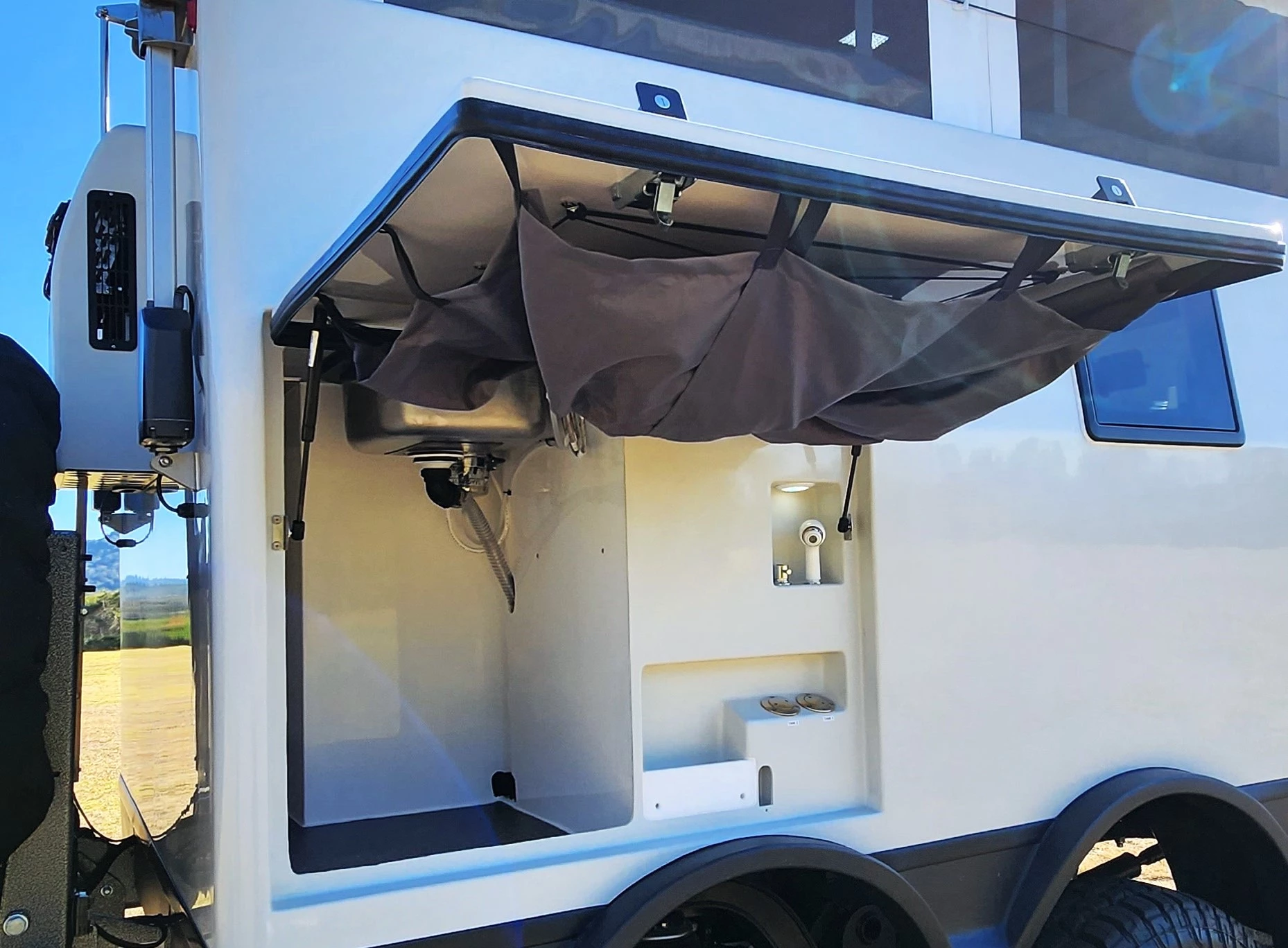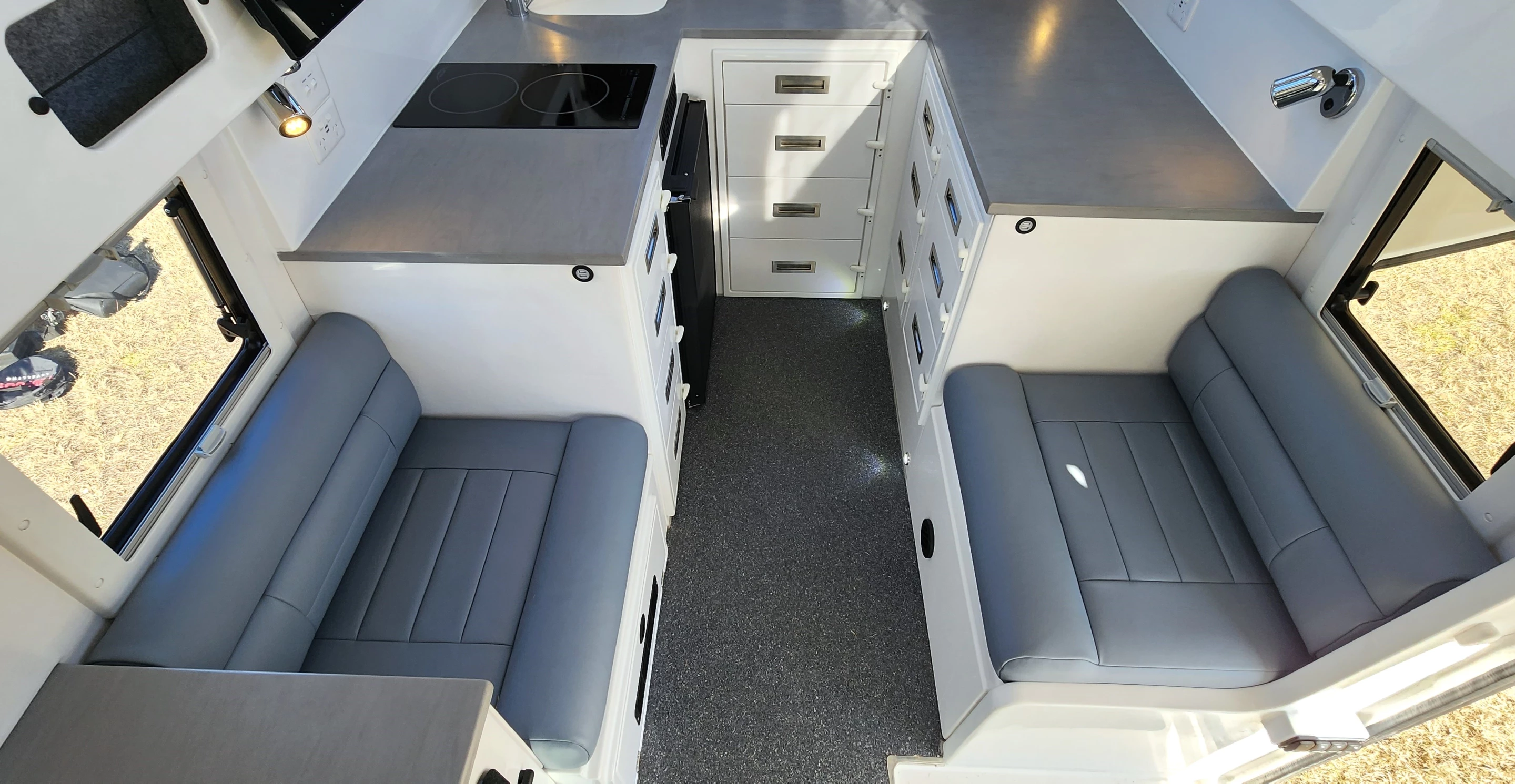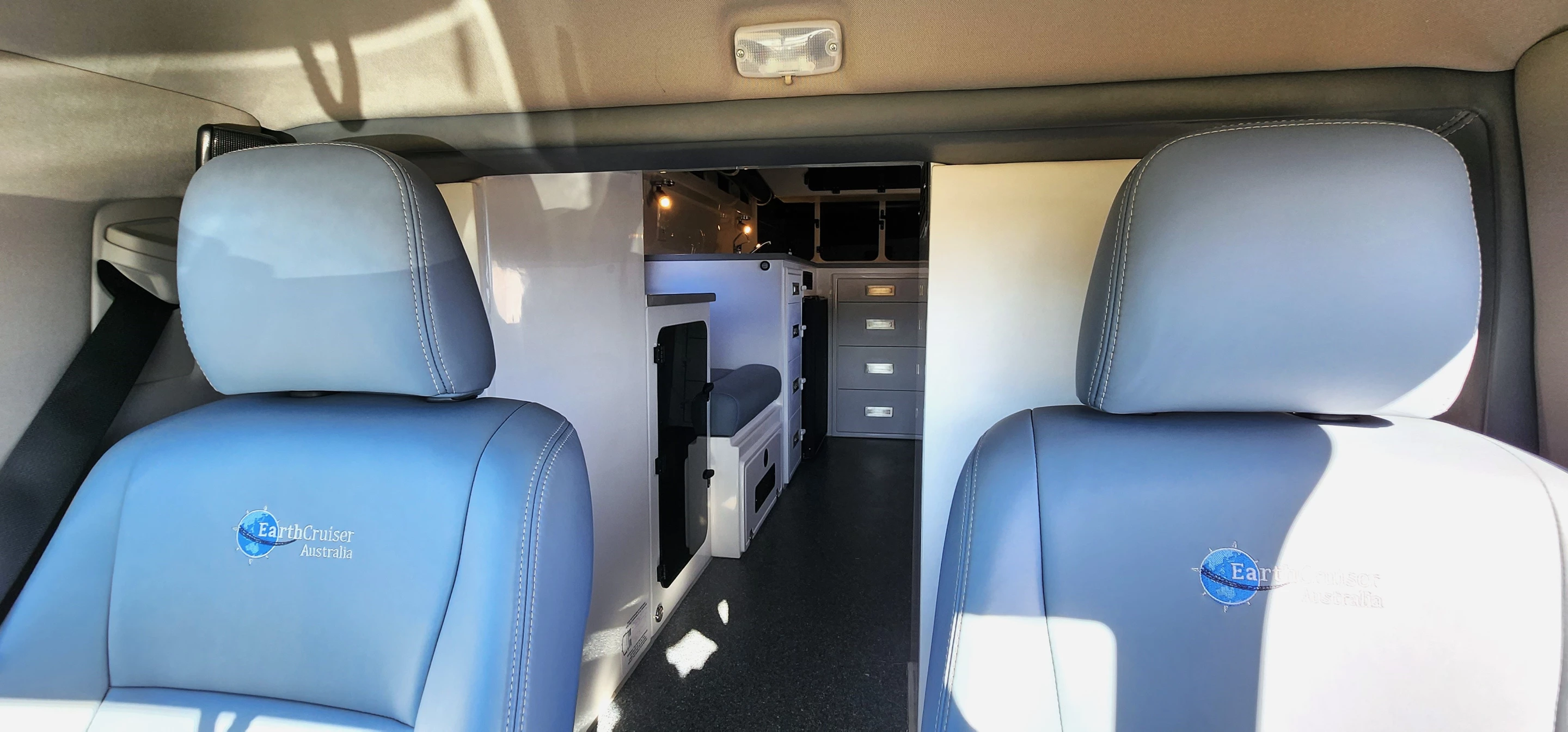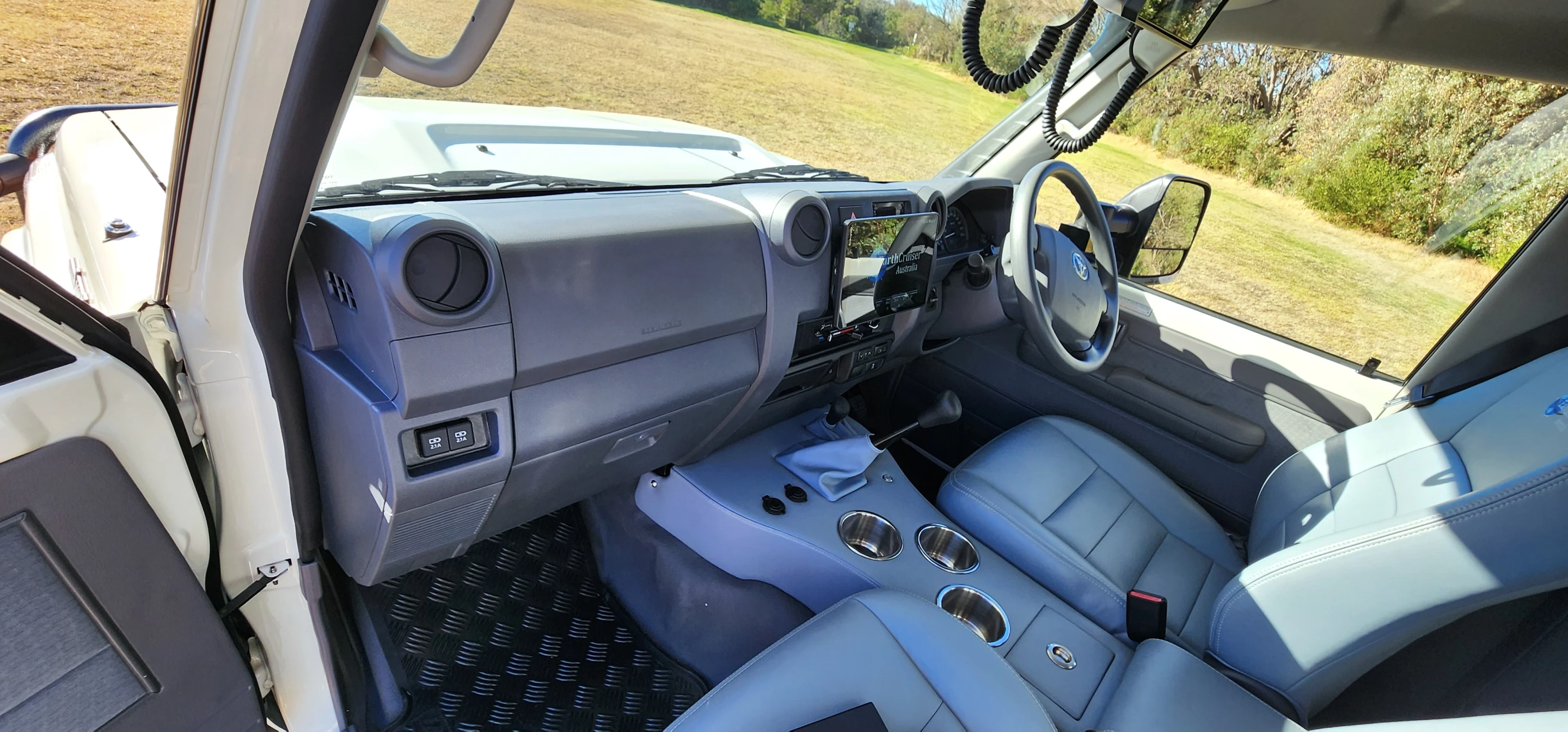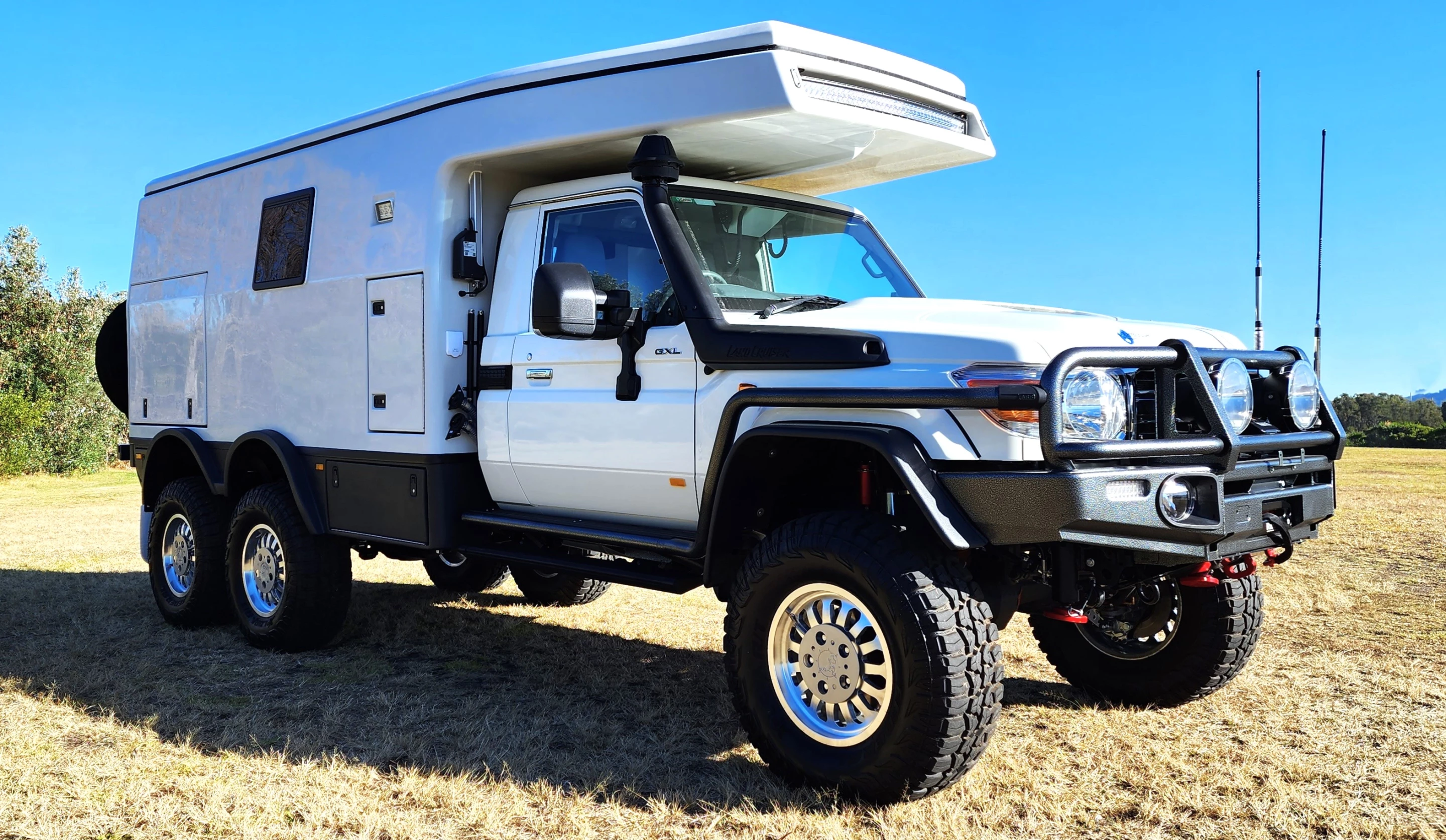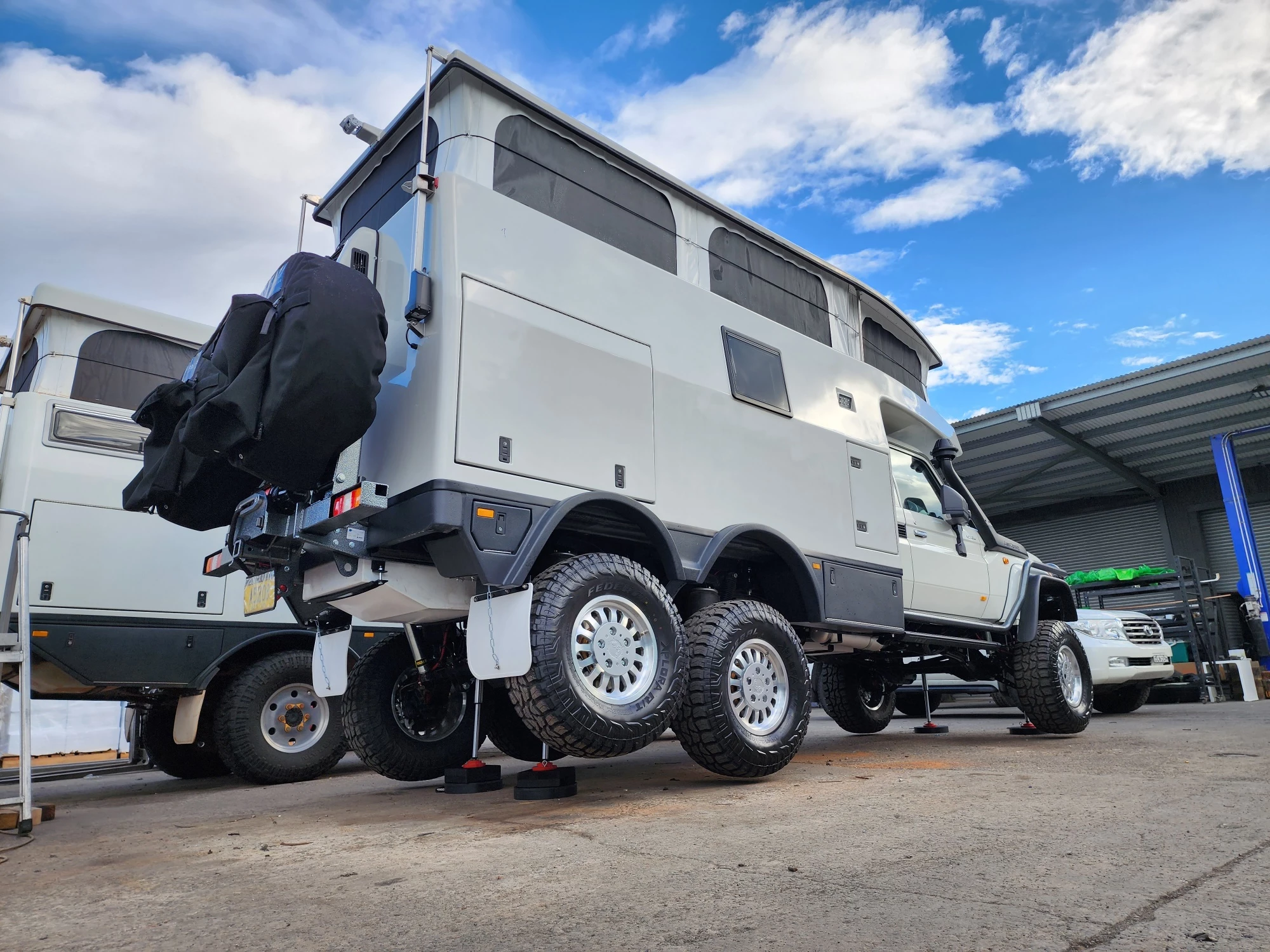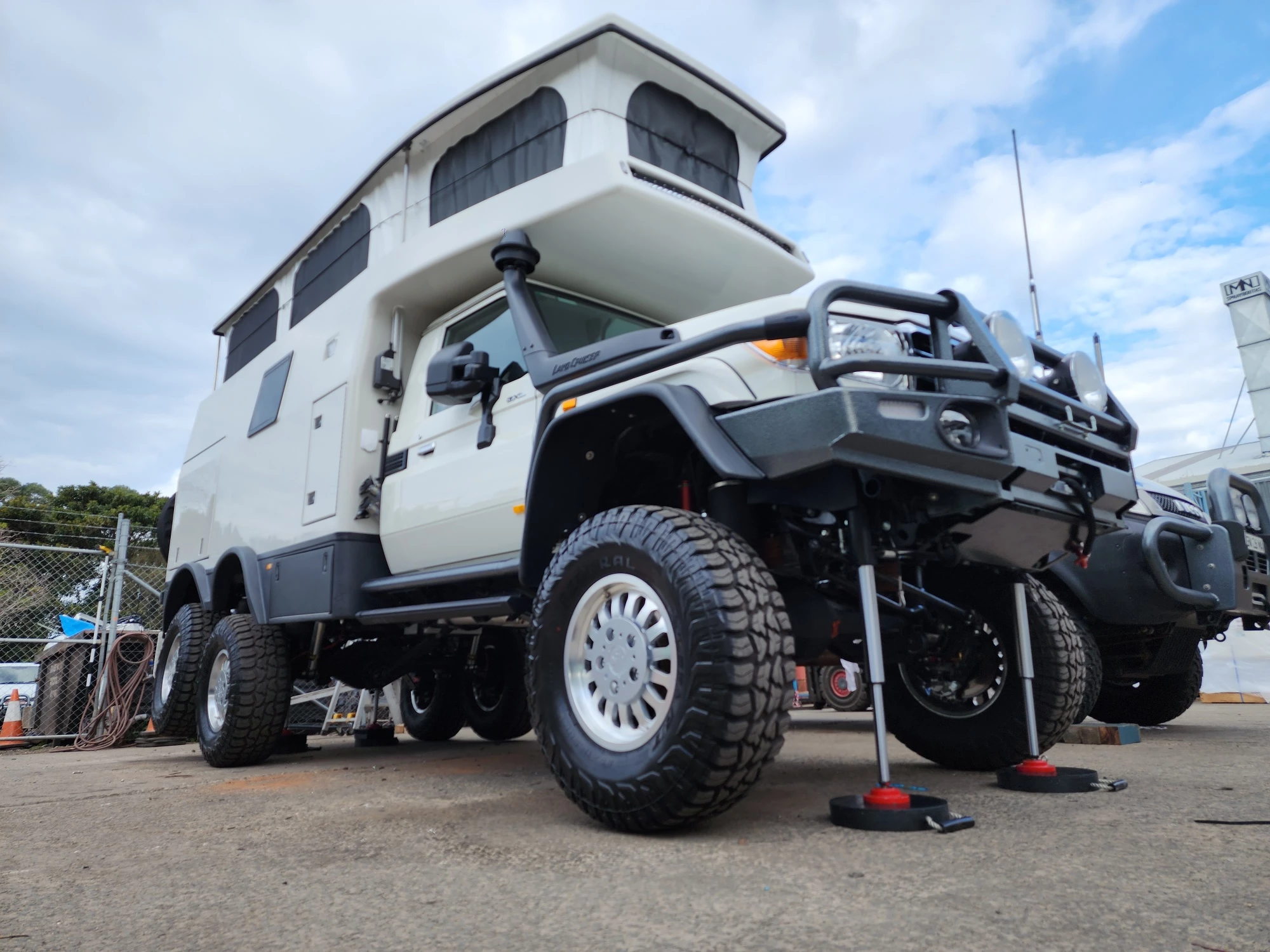EarthCruiser USA is preparing to welcome in a new era of world exploration in about a week's time, but in the meantime, EarthCruiser Australia is giving it a Foster's tallboy to hold. The southern originator of the iconic go-anywhere expedition RV brand is taking the Extreme even extremer. The all-new Land Cruiser Extreme 330 XTR6x6 adds a third driven axle to the company's already awesome Extreme expedition truck series, supporting a stretched living module with even more space and amenities. Cruise the farthest edges of the Outback, Arctic or Serengeti and stay Starlinked to civilization inside your mobile smart castle.
EarthCruiser's original "Extreme" XTR250 was possibly the best thing to emerge out of pandemic times, closing out the trying year of 2020 with visions of better days to come – days that could come as far away from the mass populace as one's heart desired. Any time you establish a way to live comfortably on what's arguably the world's toughest 4x4, you've done humanity proud.
But some customers always want that little bit extra, and EarthCruiser devised the all-new Extreme 330 XTR6x6 in response to a request from one such valued customer with pockets sagging down to the ankles. It initially developed the new triple-axle live-in Land Cruiser as a one-off for said buyer but quickly found other loyal clients eager to queue up and reserve their own, establishing it as a regular lineup member.

Of course, a "regular" EarthCruiser isn't all that regular at all, and the XTR6x6 exemplifies that better than average. It starts life as a humble Land Cruiser 79, rolling quietly off the Toyota factory line before getting seriously revamped by 6x6 Australia Pty Ltd.
The six-wheel-crazy New South Wales outfit installs its locomotive-inspired bogie-drive, connecting the two coil/airbag-sprung rear axles through a differential. The power-divide differential allows the rearmost axle to spin along unpowered during normal highway driving conditions, locking automatically when conditions get slick to split power out to all four rear wheels (as well as the front wheels). Drivers can also activate the ARB air locker on demand, along with the truck's two other differential lockers, from the in-cab switchboard.
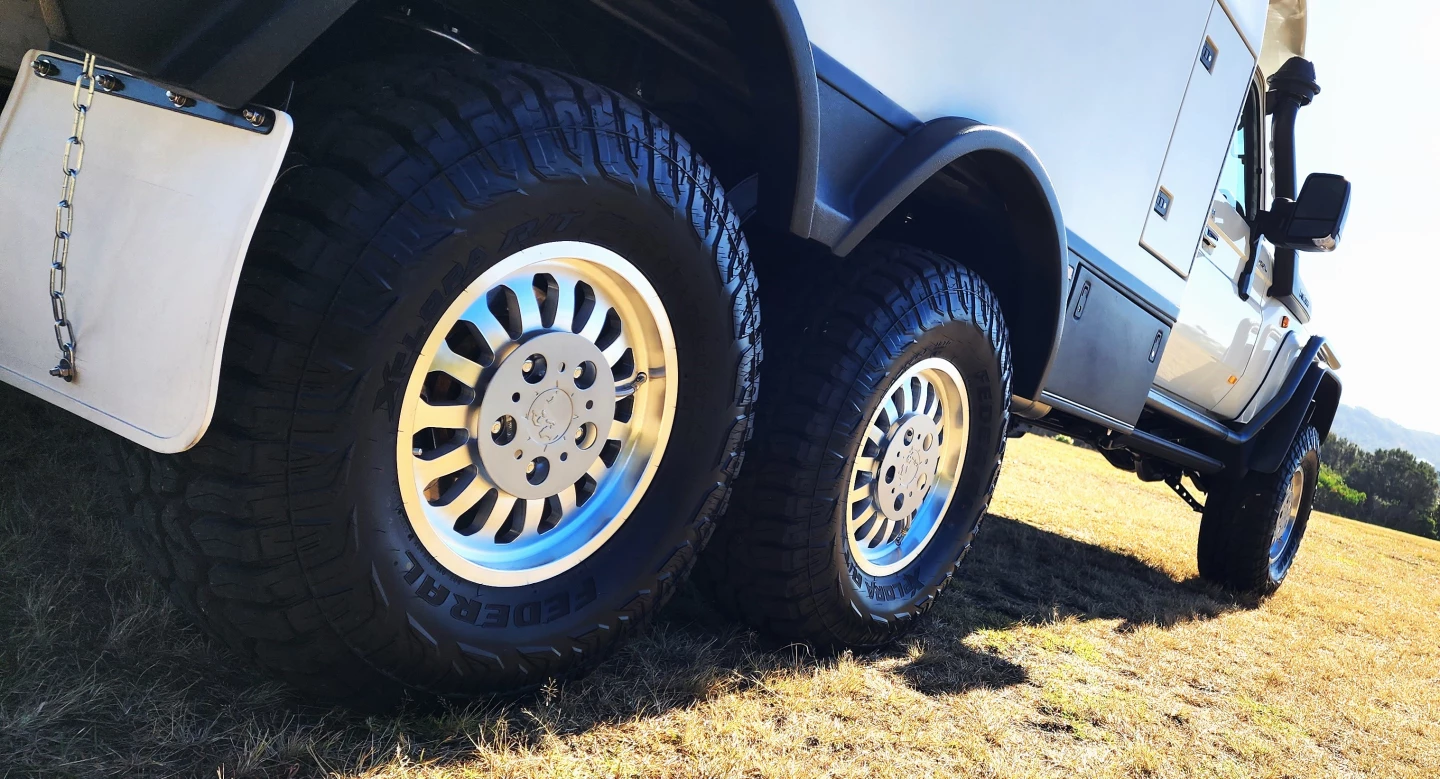
The base 79 Series upgrading also includes the necessary CNC laser-cut chassis extension, portal axles for a 5-in (12.7-cm) lift and 16% gear reduction, a variable ratio rear steer system that adds slight lean from the rear bogie for improved maneuvering, a central tire inflation system activated from the cab on the Garmin GPS touchscreen, a hydraulic brake booster and upgraded calipers, military-spec HD sway bars with remote disconnect, and Bilstein shocks and steering dampening.
Ground clearance from the lowest hanging differential housing checks in at 15.4 in (39 cm), and the complete dry vehicle with motorhome module in place stashes away 6,600 lb (3,000 kg) of payload for hauling people and provisions.
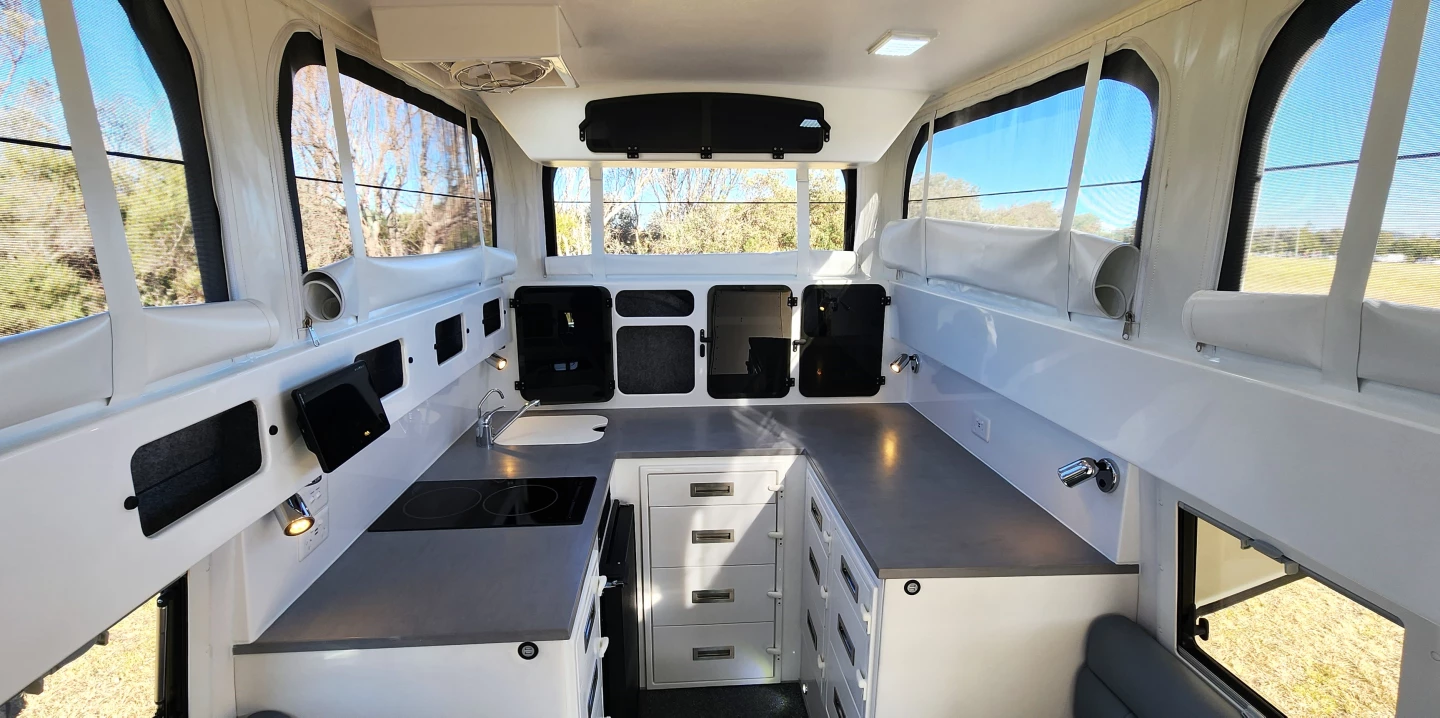
EarthCruiser makes a motorhome out of that thoroughly upfitted chassis-cab by securing a vacuum infusion molded carbon-composite body aboard the extended bare bones. The XTR6x6 has a pop-top floor plan similar to the dual-axle XTR250, albeit stretched out into more spacious accommodations.
The U-shaped rear kitchen seems to benefit the most from the added motorhome size, and while it still looks best for a single chef working culinary magic alone, he or she will enjoy loads of work space thanks to the wraparound counter and sleek, flush-mounted dual induction cooktop. The 122-L fridge is tucked away under the counter amidst a sea of drawers, backed up by a secondary 68-L fridge hidden away in an outside storage cabinet next to the slide-out electric BBQ. A microwave oven rounds out the onboard cooking equipment list.

At the opposite end of the cabin, the double bed in the alcove serves as a master bedroom. The camper sleeps a total of three people once the dual-bench dinette transforms into the third berth. Two cabin seats include belts to accommodate a total of four people on the ride when combined with the two seats in the Land Cruiser cab.
A flexible entryway bathroom/mudroom has been a part of EarthCruiser's design book as long as we've been familiar with the brand, and the XTR6x6 is no different. A fold-out wall system creates a private bathroom area just inside the entry door for showering and use of the powered slide-out Thetford chemical toilet. There's also an outdoor hot/cold shower.
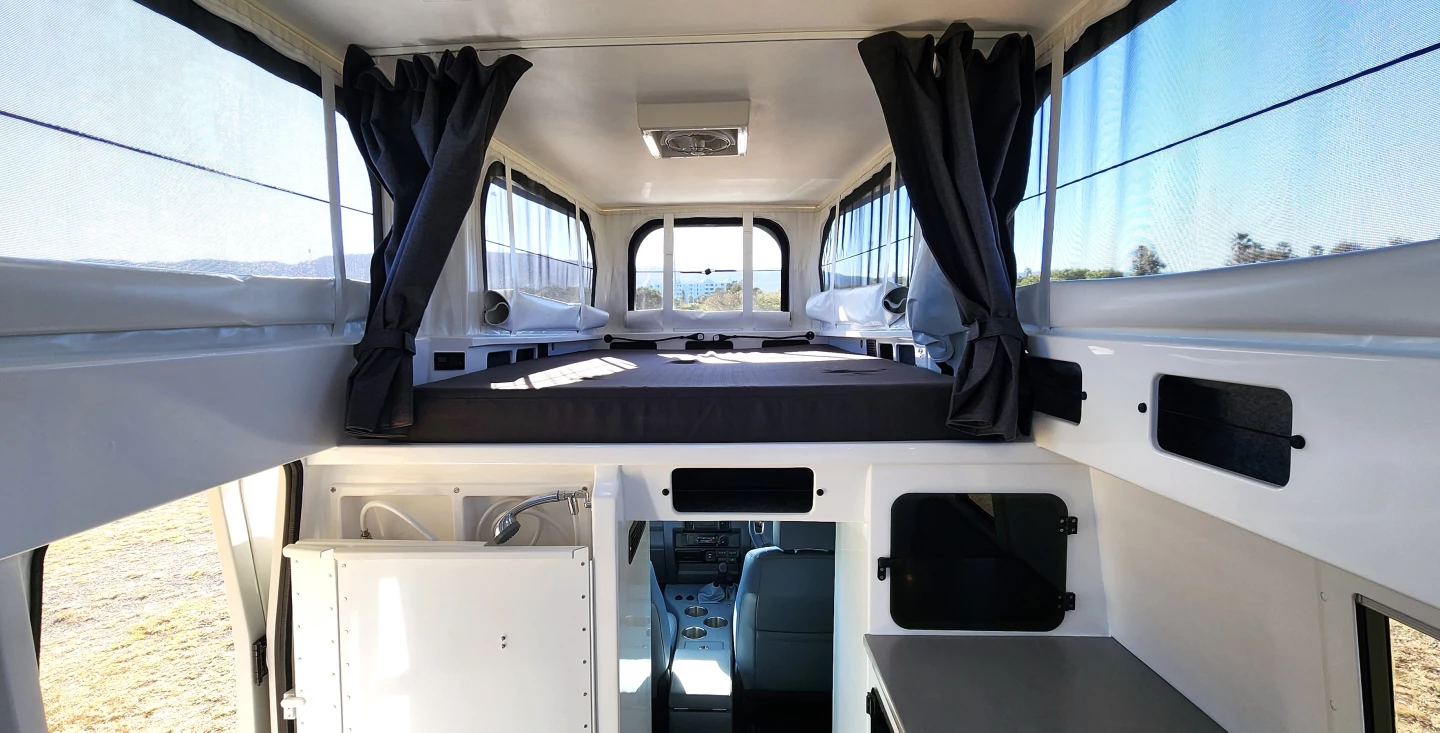
The XTR6x6 clearly isn't designed to be tethered to the camping park on city outskirts, and EarthCruiser adds an upgradeable off-grid package to ensure it has the legs to safely explore anywhere and everywhere. The electrical beating heart of that system is an 1,110-Ah lithium battery bank with veins coming in from 810 watts of solar panels and a 200-A mine-spec alternator and arteries branching out into the motorhome through a 3,000-W inverter.
Three onboard Garmin touchscreens provide seamless control of motorhome systems and features, and two of them remove from their wireless docks to serve as remote controls. The Garmin head unit in the cab comes loaded with Hema mapping for more confident off-road navigation.
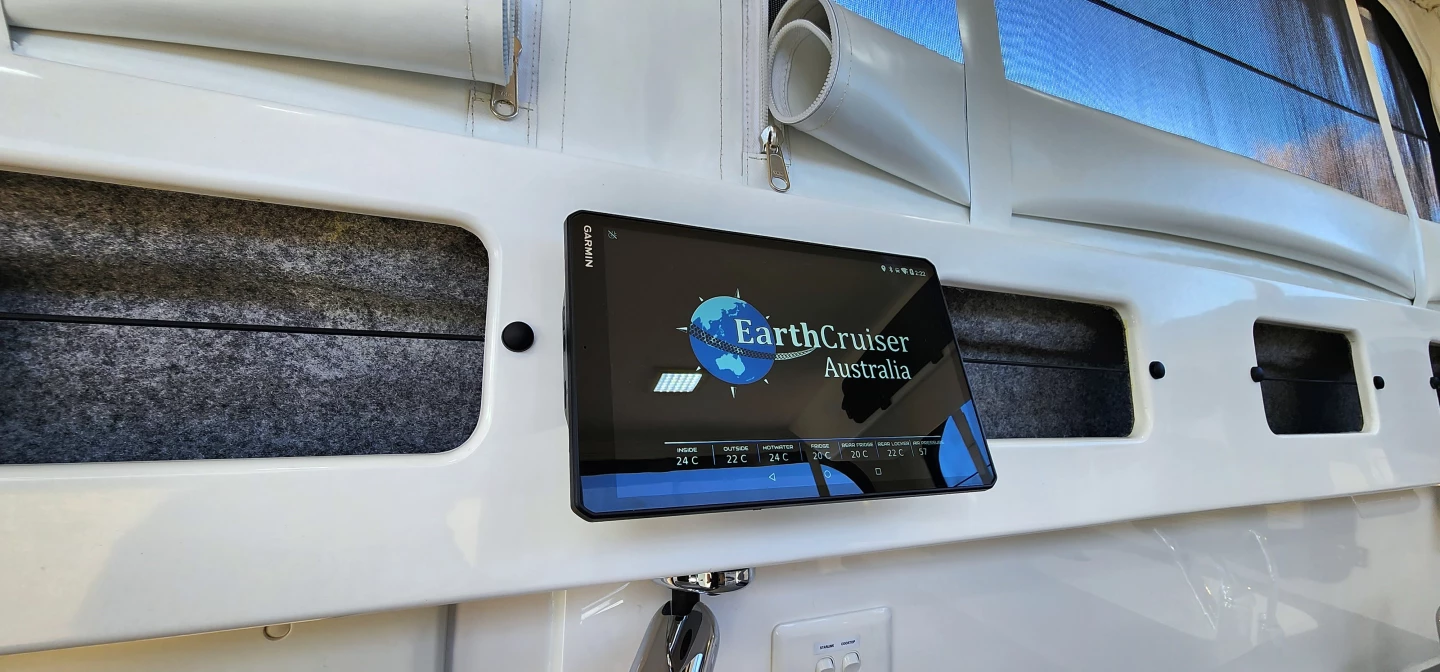
The XTR stays connected with civilization, no matter how far away it is physically, using integrated Starlink internet connectivity with a rooftop satellite receiver mounted flush to prevent catching and damage. When the truck brushes back up against cellular range, an optional signal booster can strengthen the waves enough for clear service.
To keep everyone feeling comfortable and fresh, the XTR6x6 has both air conditioning and heating as standard and includes 275 liters of fresh water storage protected by an Arctic-grade heating package designed for temperatures as low as -40 °C (-40 °F). The rig also packs onboard tools like a pressure washer, wet/dry vac, air compressor and even a chainsaw and Fiskars axe – for when the only path forward is covered in deadfall that would look better atop the evening's campfire.
Sadly, EarthCruiser hasn't put a precise figure on how many (Australian) dollar bills (or coins) it believes this particular state-of-the-art explorer vessel demands (we've reached out for that exact number), but we're sure it's going to helicopter comfortably above the 2020 XTR250's AU$240,000 (approx. US$153,000) starting price.
Source: EarthCruiser Australia
